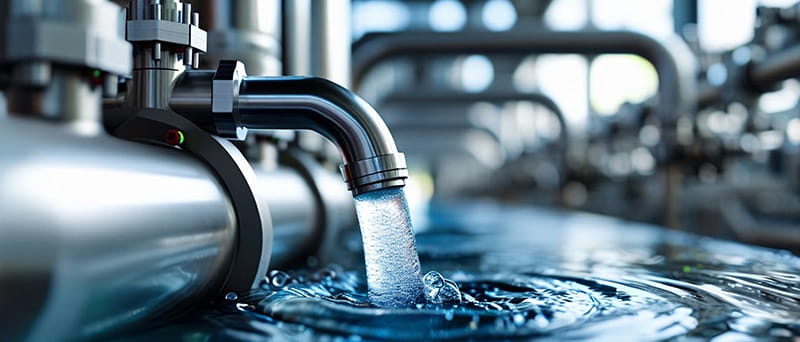Read the latest thoughts and analysis on breakthrough solutions driving impact for a sustainable future
Why food is the new energy transformation for climate

Over the last decade, the climate story has been told as an energy story, but the new 2025 EAT–Lancet Commission report surfaces a critical new dimension. Even if we fully decarbonize power systems, our food systems can still push us past 1.5°C. Fortunately, we can transform them within clear food-system limits tied to planetary boundaries.
Planetary boundaries make food a first-order variable
Planetary boundaries research shows Earth has crossed six of nine limits, and food production is a major driver of these transgressions. The EAT–Lancet team links 30% of global emissions to agrifood systems. 10% is food waste alone. To combat this, EAT-Lancet researchers establish a food-system boundary for the planet. By 2050, what we grow, raise, process, and eat should produce no more than five billion tons of climate pollution each year, a goal only reachable through shifts in diet, productivity gains, and waste cuts.
Enter the Planetary Health Diet
The mostly plant-based way of eating that EAT-Lancet proposes keeps people healthy while easing pressure on the planet. With an emphasis on vegetables, fruits, whole grains, legumes, and nuts, the Planetary Health Diet (PHD) keeps red meat, added sugar, and ultra-processed foods to a minimum. The idea is not to impose a strict menu, but to establish ranges that countries and cultures can adapt.
Following the PHD would lower health risks and prevent around 15 million adult deaths annually, while reducing the food system’s impact on climate, land, water, and pollution. In short, eat more plants, avoid processed foods, and treat meat as an occasional side rather than the main event.

Justice on the menu
While the PHD sets what a healthy, sustainable plate looks like, food justice tackles who can access it. EAT-Lancet researchers found that the wealthiest 30% of diets drive more than 70% of food-related environmental pressures. Without fair wages, pricing, and access, the PHD is only theoretical for billions of people.
But justice measures can create system change. Policies such as fruit and vegetable subsidies for schools and hospitals and fair prices for farmers would make those choices easy and affordable everywhere, not just in wealthy neighborhoods. Higher-impact consumers, firms, and countries should move fastest (and help finance change), so lower-income communities aren’t asked to shoulder costs they didn’t create. PHD ranges can also be adapted to local cuisines and traditions, so communities can hit health and sustainability targets without losing food identity.
Rethinking what we produce (not just what we eat)
EAT-Lancet’s report may start at the dinner table, but the changes it calls for are systemic, reshaping farms and supply chains toward plants while downshifting meat, so supply matches the PHD people are asked to follow.
That means things like smarter crop rotations, precision irrigation, better fertilizer management, healthier soils, and agroforestry instead of clearing new land. The payoff is nature protection and cuts to greenhouse gas emissions. Paired with lower food loss and waste in transportation and storage, these shifts shrink the food system’s climate footprint.

Water makes the food transition real
Before food, however, comes something even more fundamental. 70% of global freshwater withdrawals are caused by agriculture, and without secure, intelligently managed water, a food transition cannot scale. Abu Dhabi Sustainability Week’s Advisory Committee on Food and Water[link to come] notes that water policy is an integral part of the food transition story, from food justice to technology adoption.
When water is too cheap, big users take most of it, and underground supplies get drained. Committee members recommend governments and municipalities set fair prices, while keeping a basic amount of water affordable for families, pushing small businesses and farmers to choose smarter crops and invest in water-saving tools.
The headline technologies largely exist: efficient irrigation, optimizing water use in cold shipping, and low-carbon desalination. The issue, says the committee, is adoption. Small farmers and businesses face high upfront costs with few incentives, limited financing, and lack of training and maintenance support.
This crucial conversation is set to continue at Abu Dhabi Sustainability Week in 2026.
The bottom line: energy isn’t enough
The coming decade must be about healthy, just, nature-positive food. Agrifood systems are responsible for roughly one-third of global emissions, so aligning food and water is now as decisive as decarbonizing power. Governments can shift markets through procurement and standards. Investors can fund innovation in agriculture. Companies can reformulate and redesign food environments.
Do this, says EAT-Lancet, and we can move “food is the new energy transition” from a slogan to a practical path for protecting climate, restoring nature, and improving lives. “Food connects global agendas to everyday individual action in a way that is tangible,” said EAT founder and executive chair Gunhild A. Stordalen. “If everyone is given the opportunity to make better choices, food suddenly becomes an extremely powerful tool for change.”
Planetary boundaries make food a first-order variable
Planetary boundaries research shows Earth has crossed six of nine limits, and food production is a major driver of these transgressions. The EAT–Lancet team links 30% of global emissions to agrifood systems. 10% is food waste alone. To combat this, EAT-Lancet researchers establish a food-system boundary for the planet. By 2050, what we grow, raise, process, and eat should produce no more than five billion tons of climate pollution each year, a goal only reachable through shifts in diet, productivity gains, and waste cuts.
Enter the Planetary Health Diet
The mostly plant-based way of eating that EAT-Lancet proposes keeps people healthy while easing pressure on the planet. With an emphasis on vegetables, fruits, whole grains, legumes, and nuts, the Planetary Health Diet (PHD) keeps red meat, added sugar, and ultra-processed foods to a minimum. The idea is not to impose a strict menu, but to establish ranges that countries and cultures can adapt.
Following the PHD would lower health risks and prevent around 15 million adult deaths annually, while reducing the food system’s impact on climate, land, water, and pollution. In short, eat more plants, avoid processed foods, and treat meat as an occasional side rather than the main event.

Justice on the menu
While the PHD sets what a healthy, sustainable plate looks like, food justice tackles who can access it. EAT-Lancet researchers found that the wealthiest 30% of diets drive more than 70% of food-related environmental pressures. Without fair wages, pricing, and access, the PHD is only theoretical for billions of people.
But justice measures can create system change. Policies such as fruit and vegetable subsidies for schools and hospitals and fair prices for farmers would make those choices easy and affordable everywhere, not just in wealthy neighborhoods. Higher-impact consumers, firms, and countries should move fastest (and help finance change), so lower-income communities aren’t asked to shoulder costs they didn’t create. PHD ranges can also be adapted to local cuisines and traditions, so communities can hit health and sustainability targets without losing food identity.
Rethinking what we produce (not just what we eat)
EAT-Lancet’s report may start at the dinner table, but the changes it calls for are systemic, reshaping farms and supply chains toward plants while downshifting meat, so supply matches the PHD people are asked to follow.
That means things like smarter crop rotations, precision irrigation, better fertilizer management, healthier soils, and agroforestry instead of clearing new land. The payoff is nature protection and cuts to greenhouse gas emissions. Paired with lower food loss and waste in transportation and storage, these shifts shrink the food system’s climate footprint.

Water makes the food transition real
Before food, however, comes something even more fundamental. 70% of global freshwater withdrawals are caused by agriculture, and without secure, intelligently managed water, a food transition cannot scale. Abu Dhabi Sustainability Week’s Advisory Committee on Food and Water[link to come] notes that water policy is an integral part of the food transition story, from food justice to technology adoption.
When water is too cheap, big users take most of it, and underground supplies get drained. Committee members recommend governments and municipalities set fair prices, while keeping a basic amount of water affordable for families, pushing small businesses and farmers to choose smarter crops and invest in water-saving tools.
The headline technologies largely exist: efficient irrigation, optimizing water use in cold shipping, and low-carbon desalination. The issue, says the committee, is adoption. Small farmers and businesses face high upfront costs with few incentives, limited financing, and lack of training and maintenance support.
This crucial conversation is set to continue at Abu Dhabi Sustainability Week in 2026.
The bottom line: energy isn’t enough
The coming decade must be about healthy, just, nature-positive food. Agrifood systems are responsible for roughly one-third of global emissions, so aligning food and water is now as decisive as decarbonizing power. Governments can shift markets through procurement and standards. Investors can fund innovation in agriculture. Companies can reformulate and redesign food environments.
Do this, says EAT-Lancet, and we can move “food is the new energy transition” from a slogan to a practical path for protecting climate, restoring nature, and improving lives. “Food connects global agendas to everyday individual action in a way that is tangible,” said EAT founder and executive chair Gunhild A. Stordalen. “If everyone is given the opportunity to make better choices, food suddenly becomes an extremely powerful tool for change.”
More Articles
22 DECEMBER 2025
Smart Cities
Three case studies on AI’s growing role in urban planning and mobility
19 DECEMBER 2025
Decarbonization
5 Ways Supply-Chain Circularity Is Making Countries More Climate-Resilient
18 DECEMBER 2025
Sustainability


